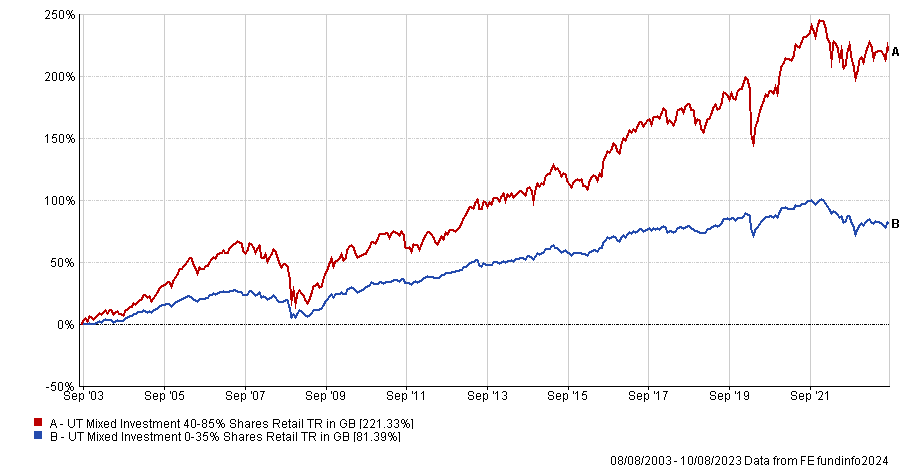Financial planners grow their business through referrals, so we’re always delighted to talk to a prospect about what we can do for them. However, a referral is all too often a “distress purchase” – that point in someone’s life when the penny drops that they may need some professional help with a problem – which may then be too late to do much about it.
This article touches on some of those lessons, so if they only listen to a couple of things, hopefully these are those things.
Setting goals
Our lives are a financial journey and financial planning is the route-finder and navigation system for that journey. Often, when I meet a new client, I am reminded of the famous exchange between Alice and the Cheshire Cat, as visualised by Lewis Carroll:
Alice: “Would you tell me, please, which way I ought to go from here?”
The Cheshire Cat: “That depends a good deal on where you want to get to.”
Alice: “I don’t much care where.”
The Cheshire Cat: “Then it doesn’t much matter which way you go.”
Alice: “So long as I get somewhere.”
The Cheshire Cat: “Oh, you’re sure to do that, if only you walk long enough.”
This has been particularly pertinent when I have been introduced to someone who is about to retire. I have no doubt there would have been a significantly better outcome if that referral had been earlier in that particular financial journey!
Bank on the efficiency of markets
When we consider younger generations, if they start early enough and pay in a sensible amount, they may find the investment markets take care of the rest, avoiding a cliff-edge moment in later life or working when they could be enjoying other aspects of life. Again, this comes from the perspective of having reached an age when I’ve seen the value of that, but there are other ways to illustrate it other than personal experience.
Let’s look at the State Pension to see how much more might need to have been saved to have a reasonable retirement. What is that for someone aged 66 today, qualifying for the full State Pension of £203.85 per week but needing a net income of £2,000 per month to maintain their desired lifestyle?
Using Legal & General’s annuity calculator, a fund of £253,268 would be needed to provide the necessary, guaranteed income for life. Even then, whilst the State Pension will increase, the annuity won’t, so the real value of the income will decline over the years. For context, £253,268 is over 3½ times more than the average pension pot of £69,481 at retirement, according to research undertaken by Finders.
Many of our children and grandchildren of working age will be saving through a Direct Contribution, often Auto enrolment, Pension and a report from the Pension Regulator, based on 2021-22 statistics stated:
“Almost all people saving in a workplace pension scheme are invested in the default fund of their pension scheme and have not personally chosen how their pension is managed or invested. For most pension savers, engagement with pension products and financial literacy is very low.”
Understanding more and making personalised decisions
One such area of engagement that could really benefit younger generations is the funds their pension invests in. Tweaks at a younger age can make a huge difference at the time they come to draw their pension. The “default fund” is, by definition, a one-size-fits-all approach. The chart on the following page shows the difference in the longer-term outcome of a lower risk (IA 0-35 Share Index) and a higher risk (IA 40-85 Share Index) and, consequently, the pension pot at retirement.
With our help, being in the right fund at the right time is more likely to be the outcome. This causes us to have a conversation about “risk” – perhaps the most misunderstood term in financial planning. The bigger risk, as this chart shows, is often in doing nothing.
Clarity through visualisation
Identifying the right level of risk and therefore whether moving away from a default fund is helpful for clients but financial planning can feel dry or irrelevant if it’s not truly personal, so that’s where Cashflow Forecasting comes in.
We take a snapshot of your current financial situation, add a specific financial goal, and then demonstrate what steps need to be taken to successfully achieve that goal. That initial analysis assumes that everything goes according to plan but what happens if something unexpected occurs to derail the journey? By adding “what-if?” to the forecast, we can see what the impact may be and then consider what further action is needed to avoid that potential disruption.

Lower risk vs higher risk portfolios over time
Taking quick and easy steps to financial protection
It’s unusual to meet a new client of working age who doesn’t have life assurance; even those with no financial dependants. However, it is rare for that same client to have Income Protection or Critical Illness cover, which statistically, are more likely to benefit them.
For fit, healthy, non-smokers, life assurance is cheap, but it’s cheap for a reason – the insurance company doesn’t expect to pay out! Royal London, the largest mutual life assurer in the UK, suggests the following for a single male aged 30 retiring at age 68.
- 5% chance of dying
- 21% chance of critical illness
- 29% chance of being off work for more than 2-months
Of course, for clients with financial dependants, we would recommend adequate life assurance, in case the unthinkable happens, but Income Protection and, possibly, Critical Illness Cover may be of more relevance to prevent the derailment of the financial plan.
Making the financial argument for advice compelling
Of course, we would always say the peace of mind that comes with financial planning makes it worthwhile, but we also understand the pressures of paying for a mortgage, schooling, pension and everything else that comes with being younger. The good news is that time is on their side.
That’s one of the reasons that we have recently reduced our minimum fees, to make our services more accessible, and introduced family linking, so that family members benefit from the same services you enjoy. Of course, the initial consultation is at our expense and without obligation, so there’s every reason to start bringing other family members into the fold.




